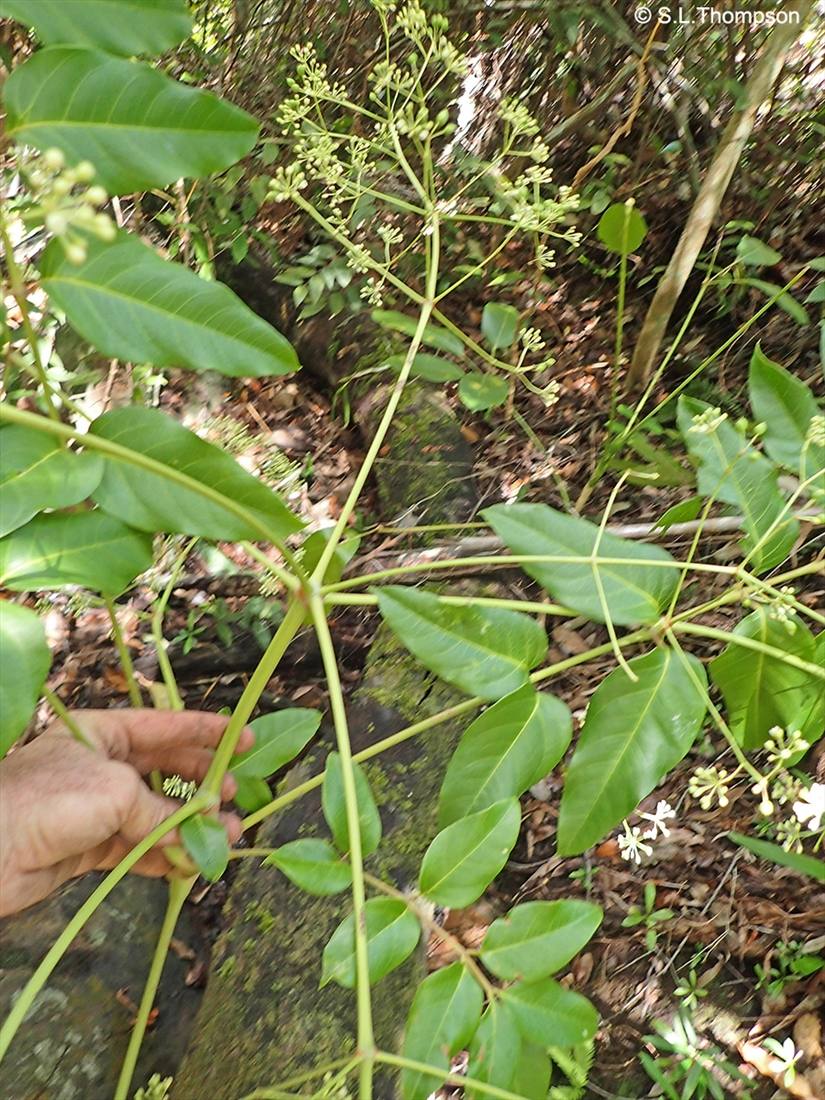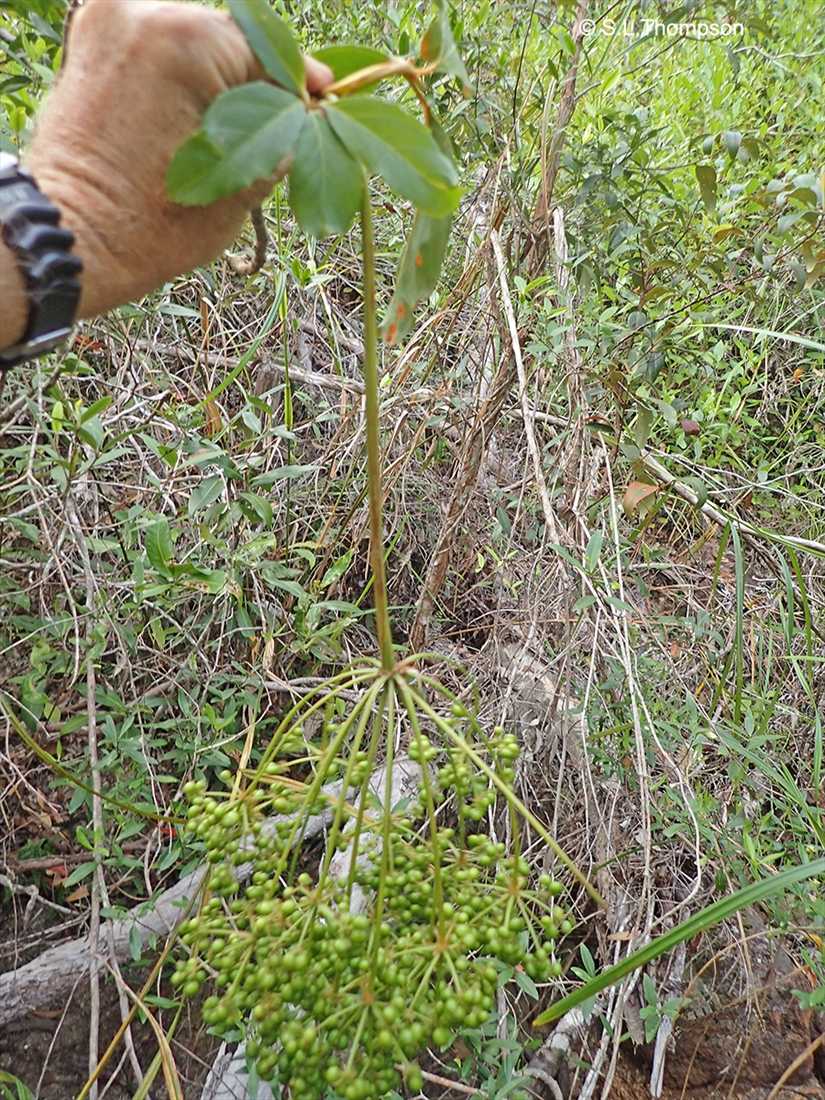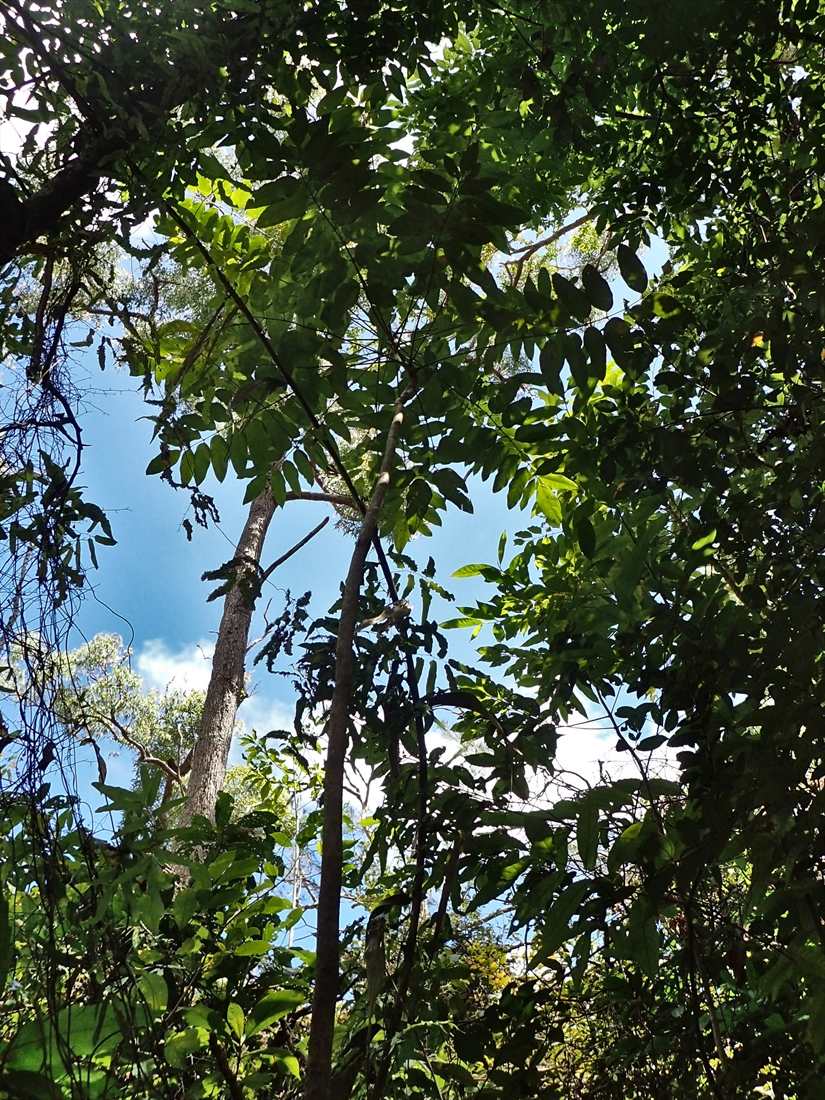Australian Tropical Rainforest Plants - Online edition
Polyscias zippeliana (Miq.) Valeton





Valeton, T. (1907) Bulletin du Departement de l'Agriculture aux Indes Neerlandaises 10: 42.
A shrub 1.5-5 m tall.
Base of the compound leaf rhachis clasping the twig. Compound leaf rhachis swollen at point of attachment of each pair of leaflets. Leaf bearing twigs generally to about 1 cm diameter. Young shoots glabrous except for slight rusty brown hairs on young growth. Leaflets in 3-4 (-5) pairs, leaflet blades about 6-17 x 3.5-9 cm.
Features not available.
P. zippeliana can be distinguished from P. australiana by its fewer leaflet pairs; larger dried fruit (6.5-8 mm long); 2 or 3 (or rarely 4) locular fruit; and longer fruiting pedicels (13-23 mm long).
Panax zippelianum Miq., Annales Musei Botanici Lugduno-Batavi 1(1): 15 (1863), Lectotype: Indonesia. Papua. Near Dourga River, [May 1828], A. Zippelius (lecto: L 0008487; isolecto: K 000792850, L 0008488).
3647





